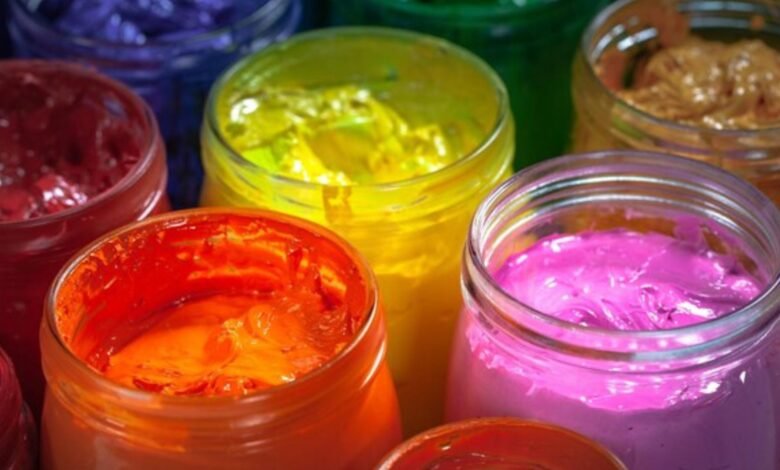Benefits of Acid Dyes: A Comprehensive Guide

Acid dyes are a category of synthetic dyes primarily used to color proteins, such as wool, silk, and nylon. Known for their vibrant colors and excellent affinity for specific fibers, acid dyes are favored in various industries, including textiles, food, and cosmetics. This article explores the benefits of acid dyes, their applications, and their significance in modern manufacturing.
What are Acid Dyes?
Definition and Composition
Acid dyes are water-soluble dyes that contain acidic groups, allowing them to bond with basic groups in proteins. These dyes are often used for dyeing fibers that have amino groups, such as those found in wool, silk, and other animal-based materials. The chemical structure of acid dyes typically includes azo or anthraquinone groups, contributing to their vivid colors.
Types of Acid Dyes
Acid dyes can be classified into two main categories:
- Leveling Dyes: These dyes provide a uniform color across the fabric and are ideal for large-scale dyeing operations.
- Mordant Dyes: These require a mordant to fix the dye to the fiber, often enhancing color depth and brightness.
Benefits of Acid Dyes
1. Vibrant Colors
One of the most significant advantages of acid dyes is their ability to produce vibrant and diverse colors. The wide range of hues available allows manufacturers to create appealing products that meet consumer preferences.
2. Excellent Color Fastness
Acid dyes are known for their excellent color fastness, meaning they resist fading when exposed to light, washing, and other environmental factors. This quality is crucial in industries where durability is essential, such as textiles and apparel.
3. Affinity for Natural Fibers
Acid dyes have a high affinity for natural fibers, especially protein-based ones like wool and silk. This property ensures that the dye adheres well to the fabric, resulting in rich and long-lasting colors.
4. Ease of Application
Acid dyes are relatively easy to apply, making them suitable for various dyeing processes, including immersion dyeing, tie-dyeing, and spray dyeing. They can be used in both batch and continuous dyeing operations, providing flexibility for manufacturers.
5. Eco-Friendly Options
With growing environmental concerns, many manufacturers are now producing acid dyes derived from natural sources. These eco-friendly dyes reduce the carbon footprint associated with synthetic dye production and offer sustainable alternatives for consumers.
6. Compatibility with Other Dyes
Acid dyes can be easily blended with other types of dyes, allowing for custom color formulations. This compatibility provides flexibility for designers and manufacturers to create unique shades and effects.
7. Versatile Applications
The versatility of acid dyes makes them suitable for various applications beyond textiles, including:
- Food Coloring: Some acid dyes are approved for use in food products, enhancing visual appeal without compromising safety.
- Cosmetics: Acid dyes are commonly used in cosmetics to provide vibrant colors in products like lipsticks, eyeshadows, and hair dyes.
Applications of Acid Dyes
Textile Industry
The textile industry is the primary consumer of acid dyes. They are extensively used to dye wool, silk, nylon, and other protein fibers. Acid dyes are ideal for producing high-quality garments, upholstery, and home textiles, ensuring durability and aesthetic appeal.
Art and Crafts
Acid dyes are popular among artists and crafters, particularly for dyeing yarns and fabrics in knitting and weaving projects. The vibrant colors and ease of use make them a preferred choice for creative applications.
Food and Beverage Industry
In the food industry, Benefits of Acid Dyes are used to enhance the color of various products, such as candies, beverages, and baked goods. These dyes must meet safety standards to ensure consumer health.
Cosmetic Industry
The cosmetic industry utilizes acid dyes for coloring products like hair dye, eye shadow, and other beauty items. The bright and long-lasting colors provided by acid dyes make them a valuable resource for cosmetic formulators.
Conclusion
Acid dyes play a crucial role in various industries, offering vibrant colors, excellent fastness, and versatile applications. Their affinity for natural fibers and ease of use make them a favorite among manufacturers, artists, and consumers alike. As sustainability becomes increasingly important, the development of eco-friendly acid dyes presents an exciting opportunity for the future of dyeing technologies.
ALSO READ:Opeño: A Comprehensive Guide to Understanding Its Significance
FAQs
1. What are acid dyes primarily used for?
Acid dyes are mainly used to color protein-based fibers like wool, silk, and nylon, but they also find applications in food and cosmetics.
2. How do acid dyes differ from other dyes?
Acid dyes are water-soluble and have a high affinity for natural fibers, particularly those containing amino groups. This sets them apart from other dyes like reactive or direct dyes.
3. Are acid dyes safe for food use?
Certain acid dyes are approved for food coloring, but it’s essential to ensure that any dye used in food meets safety regulations.
4. Can acid dyes be used on synthetic fibers?
While acid dyes work best on protein-based fibers, some synthetic fibers like nylon can also be dyed effectively with them.
5. What are the environmental impacts of acid dyes?
Traditional synthetic acid dyes can have environmental impacts; however, eco-friendly alternatives are becoming more available, reducing the carbon footprint of dye production.



